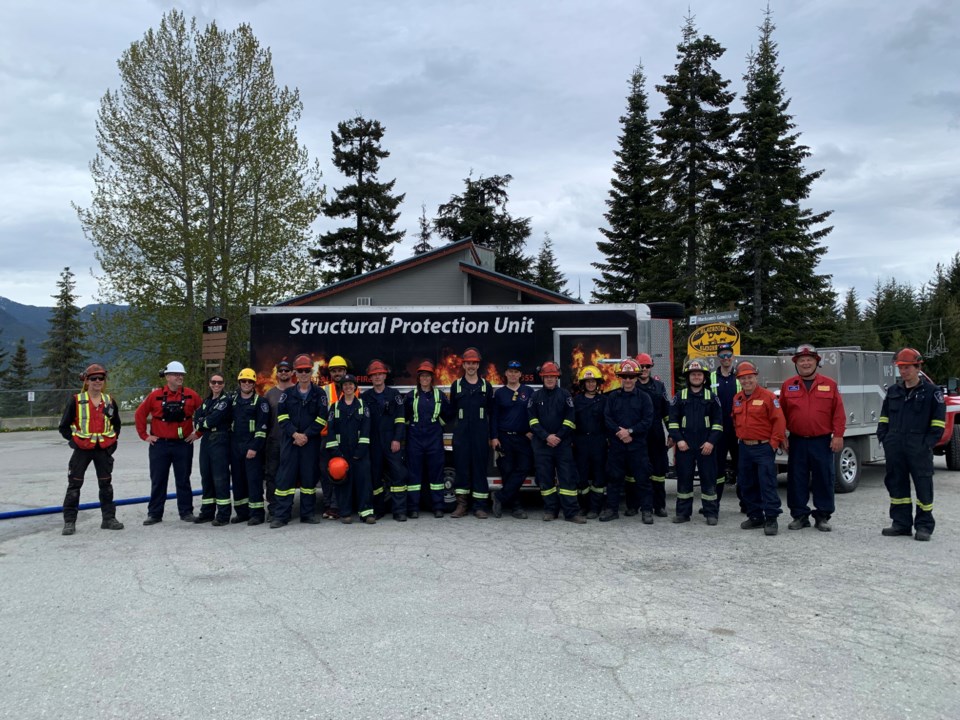Though wildfire may not be top of mind for most in February, ensuring the resort is FireSmart and equipped for potential disasters continues to be a top priority at the Resort Municipality of Whistler (RMOW) as 2023 gets underway.
On Jan. 24, Whistler’s mayor and council received an information report on the progress of the RMOW’s Community Wildfire Resiliency Plan (CWRP) adopted in April, which highlighted the work done in 2022 and the plans for the coming year.
“Wildfires have the highest climate change-related risk for us here in Whistler, and it has to be a priority for us to mitigate that risk,” RMOW emergency planner Lindsay Debou said in a presentation to council.
“Lots of progress has been made towards implementation of the recently adopted Community Wildfire Resiliency Plan, and our focus areas for 2023 will be increased education on the benefits of wildfire risk mitigation. We’ll start treating our high-priority risk areas, and we will also monitor our work and identify the impacts of filtering on long-term forest health.”
The CWRP laid out an extensive list of 32 recommendations for the municipality to lower the risk of wildfire and increase preparedness in case of emergency. The recommendations focus on several areas, including: education, community planning, development considerations, interagency cooperation, FireSmart training, emergency planning, and vegetation management.
Each of the recommendations saw progress over the last year, with some highlights including interagency training taking place in June with the Whistler Fire Rescue Service (WFRS) and the BC Wildfire Service, the launch of the junior firefighter program and a substantial amount of work done through the FireSmart program.
In 2022, 43 FireSmart risk assessments were conducted on critical pieces of RMOW infrastructure, and 13 will have landscape work take place over the coming year to address fire hazards. Additionally, the RMOW plans to implement a new $20,000 grant for homeowners to do FireSmart assessments on their properties and remove dangerous debris/vegetation.
In the fall, the RMOW received $10.1 million from the federal Disaster Mitigation and Adaptation Fund (DMAF) to undertake widespread prescribed burns and fuel management across the municipality.
The fuel management work will concentrate on the Riverside, Rainbow, and Kadenwood Gondola areas. The RMOW will use the funding over the next several years to do 877 acres (355 hectares) of prescribed burns in 12 high-risk areas, including work along Highway 99.
“One of our biggest challenges now is to make the best use and get all that money spent as efficiently as possible,” fire chief Thomas Doherty said in response to a question from council on the cost of doing the prescribed burns.
“It’s not only the people; it’s also that we’re now entering [long periods of] extreme fire risk [and] long droughts, where we can’t do the work right into the snow season. So we need timing, and making the best out of our time will be a challenge that we have to plan well,” he said.
In addition to vegetation and fuel management, the RMOW also implemented legislative changes to the Fire and Life Safety Bylaw last year that increased fines for false alarms and fire inspection fees and brought the municipality’s regulations more in line with the province’s.
Looking ahead to the coming year, the RMOW will undertake a full review of riparian development permits and other tree-cutting regulations in 2023, creating a new FireSmart communication plan and notably completing a new Wildfire Defence Plan.
The new defence plan will assess WFRS access to backcountry areas of the municipality and develop a plan for the rapid deployment of personnel trained in structural protection. It will have procedures for neighbourhoods to quickly set up sprinkler systems in the event a wildfire occurs near properties.
“The defence plan itself is going to be very complex with a number of different initiatives, which are also laid out in the resiliency plan,” Doherty said. “Some of those are water delivery systems. How do we get water to some areas and neighbourhoods where we don’t have water supply to support our structure protection equipment?
“What we’re proposing to do is plan ahead and be proactive. So those neighbourhoods will have those strategies in place before the fire comes through our community.”




